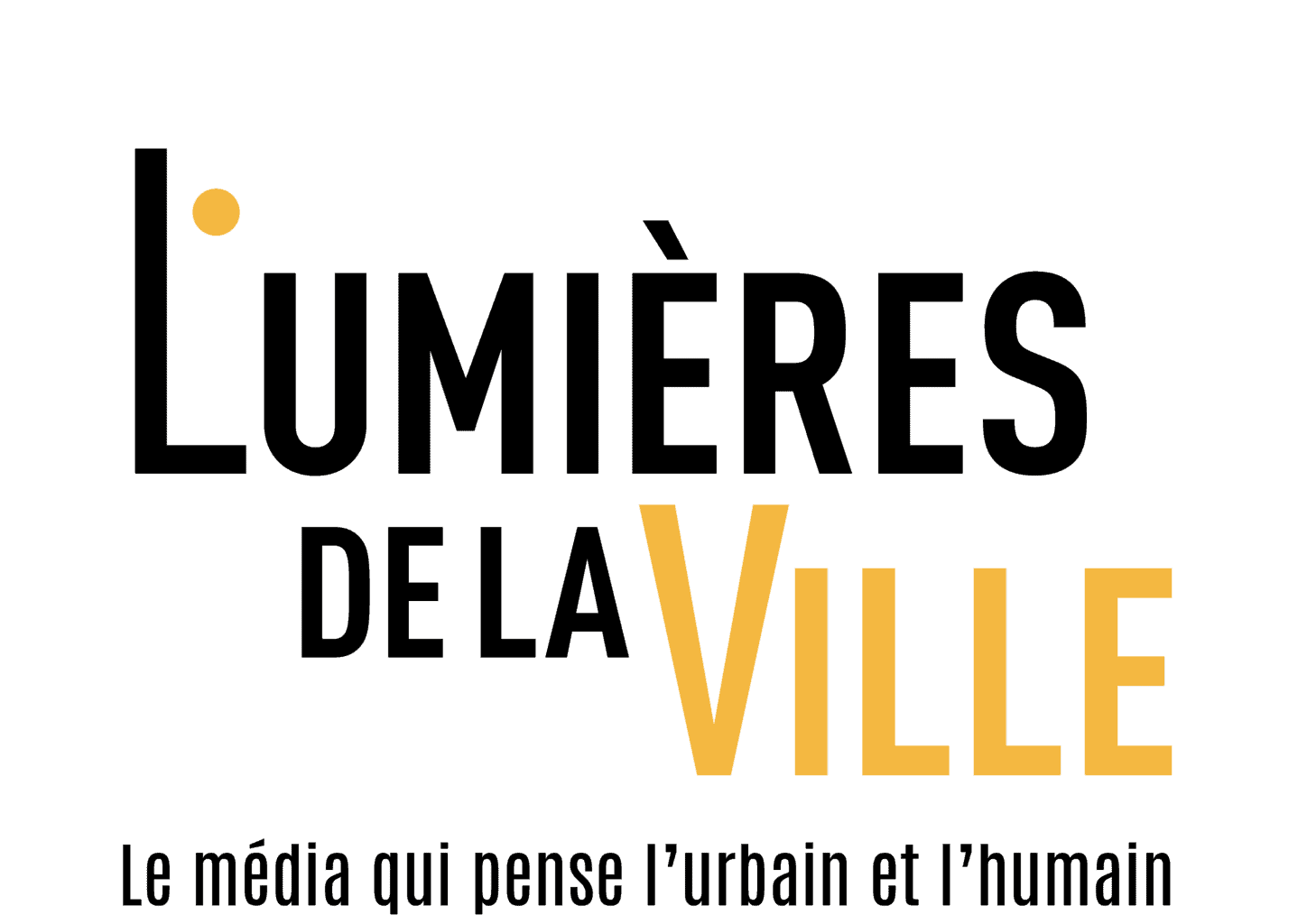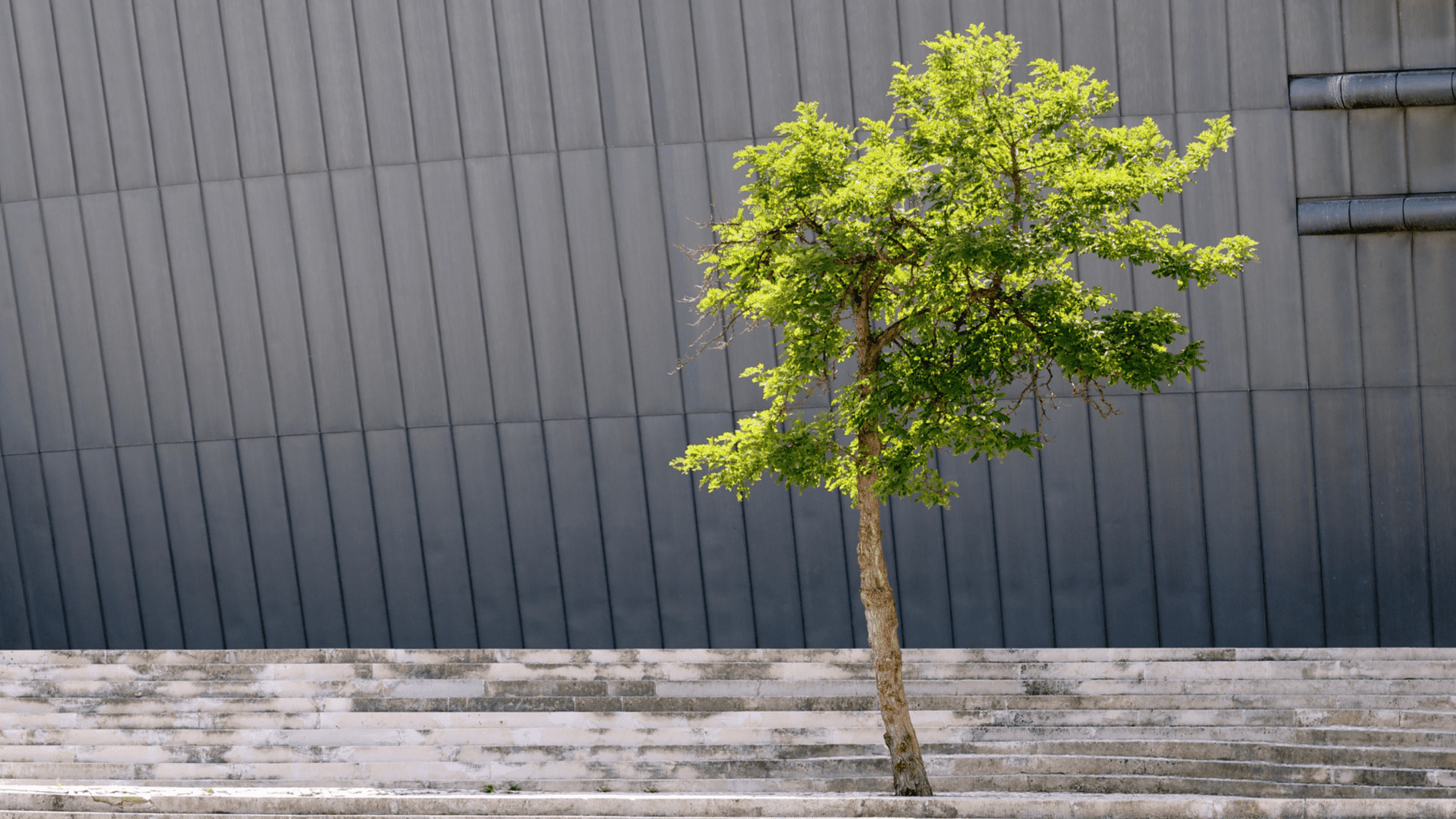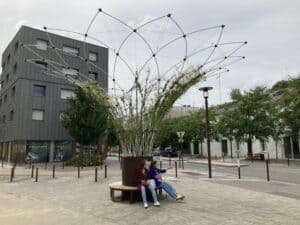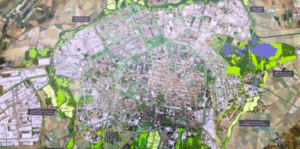
Guide to Regreening Cities
4 minutes of reading
in partnership with


Focus on planting initiatives to regreen cities including urban canopies to provide plant life without digging, planters with automatic watering or rainwater harvesting systems, “oasis” schoolyards, and urban mini-forests.

Heat waves hitting France in summer 2022 set absolute temperature records. A blistering 43°C was recorded in the south-west in June, exceeding maximum temperatures reached during the 2003 heat wave. Nearly 75% of the French population – around 45 million people – have been subjected to orange and red heat wave alerts. As predicted, the effects of such high temperatures were particularly severe in cities where population density is highest, but also where there is less plant life.
That’s where urban heat islands are particularly brutal. They are obviously dangerous for biodiversity and the well-being of urban dwellers. Given the evident effects of global warming, cities are suffocating with recurring temperatures of 40°C in recent years. The need for urban vegetation is becoming desperate. Particularly when nature in the city has many advantages.
Firstlt, it improves air quality significantly. This is crucial given that air pollution currently causes 48,000 premature deaths in France each year. Vegetation is also good for human health – both physical and mental. Studies show that a green environment regulates the heart rate and blood pressure which also reduces stress. Living in a greener environment also improves self-esteem, enhancing creativity, resulting in an overall happier state.
Plant life also has social advantages. Green spaces are conducive to meeting and socialising. Parks and gardens encourage group activities, social events, and even sport. Vegetation also has advantages for the climate. Plant life helps to reduce heat islands and provides shade during heat waves. It also reduces flood risks by making cities permeable in the event of heavy rain. Finally, biodiversity – sorely lacking in cities – returns to urban spaces where vegetation is reintroduced. Et la biodiversité manque aussi cruellement en ville.


There is no doubt that increasing vegetation in urban areas is vital. The question is: How? Effective solutions include creating parks, gardens, green roofs and walkways, and lining streets with trees. These nature-based solutions act like natural air conditioners, bringing shade into the city and cooling the atmosphere with water evaporation.
The prevalence of water in the vicinity is, however, an issue for optimising evapotranspiration and humidity in the air generated by plants. There are also important criteria to consider such as a choice of varied – and ideally local – species that are resilient to high temperatures.

Businesses innovate to regreen cities
Fortunately, many innovative solutions are emerging to assist cities with this transition. The startup Urban Canopée is specialising in the area. The focus was a solution for urban areas where it is difficult to dig for planting. To remedy this problem, they have been developing fibreglass supports for planting canopies for several years. Mounted on connected planters with a special substrate and a water reserve, the supports have sensors connected to an automatic watering system. Plants grow over the structure, developing into small cooling islands over time. Other solutions to regreen urban spaces use evapotranspiration. For example, cooling pavers have been developed by the French municipality of Toulouse. These pavers use a system of pipes that collect and store rainwater which then rises by capillary action in hot temperatures. When sensors on the paver surface detect a certain heat, they trigger the system, reducing temperatures in the area by around 5°C. Another French startup called Vertuo has developed “urban groves”. These buried cubes collect rainwater from pavements and gutters in a retention basin. The stored water is used to grow plants on the surface. The advantages of this solution are twofold: water is redirected into the ground to limit runoff and the new green spaces don’t need additional watering.
Municipalities and local authorities engage in the fight against urban heat islands
The business sector is not alone in developing solutions to regreen cities. Local authorities are also developing solutions to regreen urban areas. For example, the city of Paris has initiated the “oasis schoolyard” strategy. Identified as leverage to combat the effects of heat waves and urban heat islands, vegetation is gradually being planted in schoolyards. Designed like cool islands, the aim is to optimise plant life in schoolyards for better management of rainwater and water sources. And abroad? Cities abroad are also driving the regreening trend. In Shanghai, China, the new municipality of Lingang is touted to become a “sponge city”. This concept consists of techniques to absorb and store water using green roofs, rooftop vegetable gardens and reservoirs. These systems not only help to control heat islands, they also reduce the risk of flooding. Some areas are accessible during dry periods but are not eligible for construction because they are likely to be flooded by rising water levels or heavy rain. Finally, systems inspired by the Miyawaki method are also emerging to create small forest ecosystems measuring 200 to 3,000m2 in cities and on the outskirts. Japanese botanist Akira Miyakawi called this vegetation technique “environmental protection forests”. Established several decades ago in Japan, this method filters fine particles and captures CO2, acting as a natural air conditioner in urban spaces. These mini-forests also attract fauna and flora, manage runoff, and remediate deteriorated soils. Vitoria-Gasteiz, a city in the Spanish Basque country, has also reintroduced vegetation by creating a “green belt” that literally surrounds the city. It includes nearly 200 vegetable farms and 6 large peri-urban parks with recreational areas, all connected by 33km of pedestrian paths and 90km of bike paths. Urban vegetation methods are gradually being developed by public and private actors, both in France and abroad. The French government recently announced the creation of a €500M regreening fund to encourage the development of cool islands in the city and support local authorities.Most read
More reading
Read also




What lies ahead? 7 megatrends and their influence on construction, real estate and urban development
Article
20 minutes of reading

